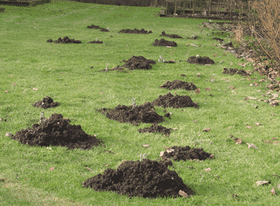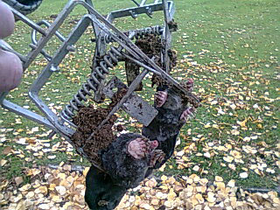Will I get another mole?

This is a question we frequently encounter. To understand why a new mole might appear on your property, it's crucial to grasp the dynamics at play. Once a mole has established an elaborate tunnel system on your premises, if that original mole is removed, there's a possibility that another mole may move in.
Moles, by thier nature, are solitary creatures and fiercely defend their territories. Therefore, if you observe molehills clustered in a specific area of your lawn, it likely indicates the presence of just one mole.
The tunnel systems crafted by moles are intricate and multi-layered. Although surface tunnels may be visible just beneath the grass, these are not the primary passageways the mole utilizes daily. The main tunnels can vary in depth, ranging from a couple of inches to a foot. It's worth noting that a single mole requires approximately 200 meters of tunnels to procure enough food for survival.
If a mole has been present for an extended period, it has likely established an extensive tunnel network beneath the surface.
So let's catch the mole! What happens now?
Other Moles

If your current mole is captured and there are other moles residing nearby, it's likely that another mole will eventually occupy the existing mole runs on your property. As mole catchers, we don't have the means to prevent this occurrence.
The original mole leaves a certain amount of scent, making the area attractive to other moles, especially if it has been a food-rich environment for some time. To minimize the risk of a new mole moving in, we recommend that our customers use a heavy roller on the damaged area (after the mole is caught). This action helps crush the mole tunnels, making it more challenging for another mole to establish residence in a pre-existing tunnel network without being noticed.
By rolling or crushing the tunnels, if additional mole damage occurs, the mole will be forced to dig new tunnels, pushing soil to the surface and creating molehills. This immediate evidence allows you to take prompt action to prevent further damage. When moles dig, the displaced soil has to go somewhere, leading to the formation of molehills.

